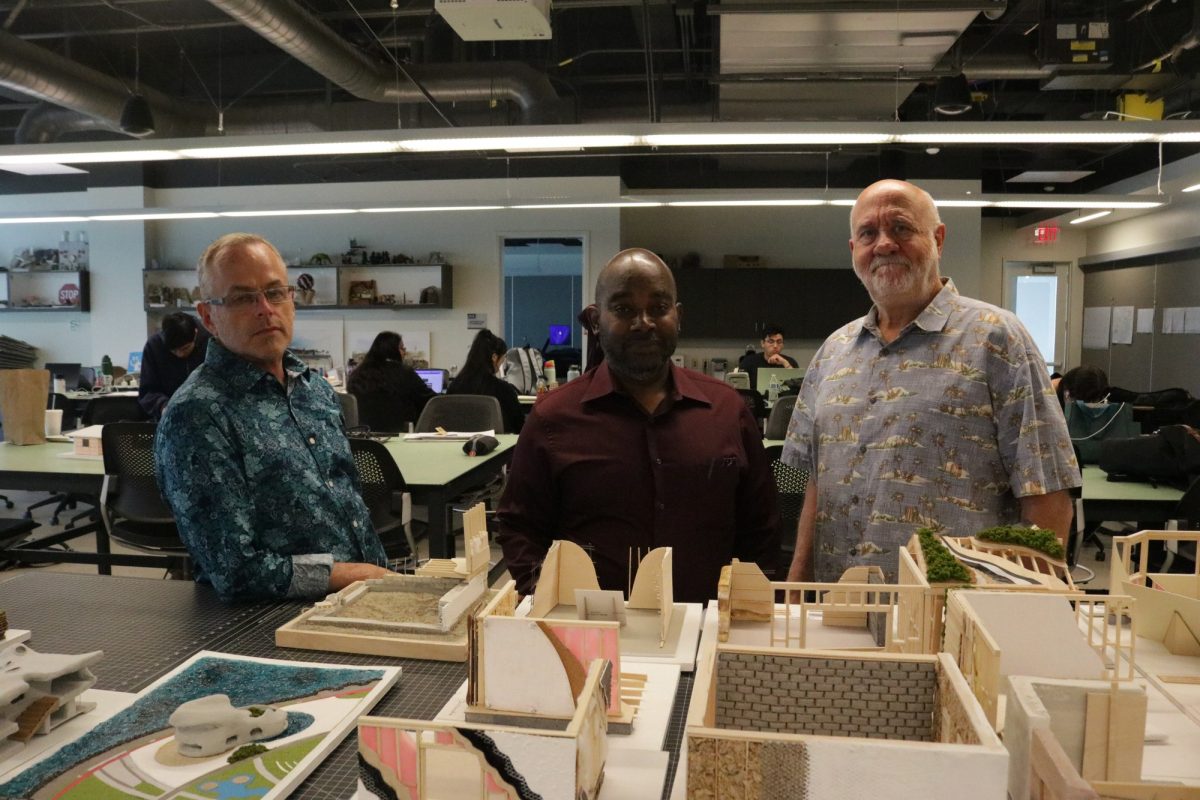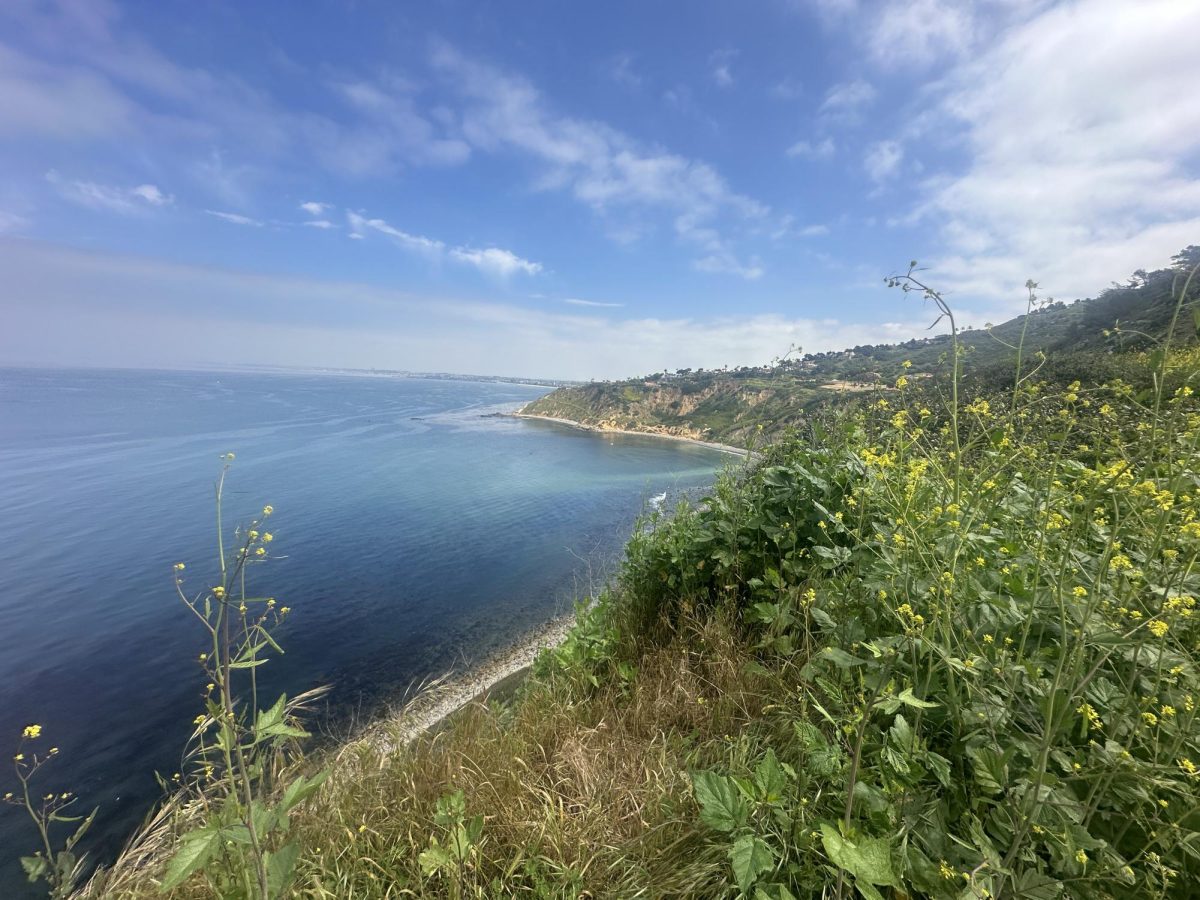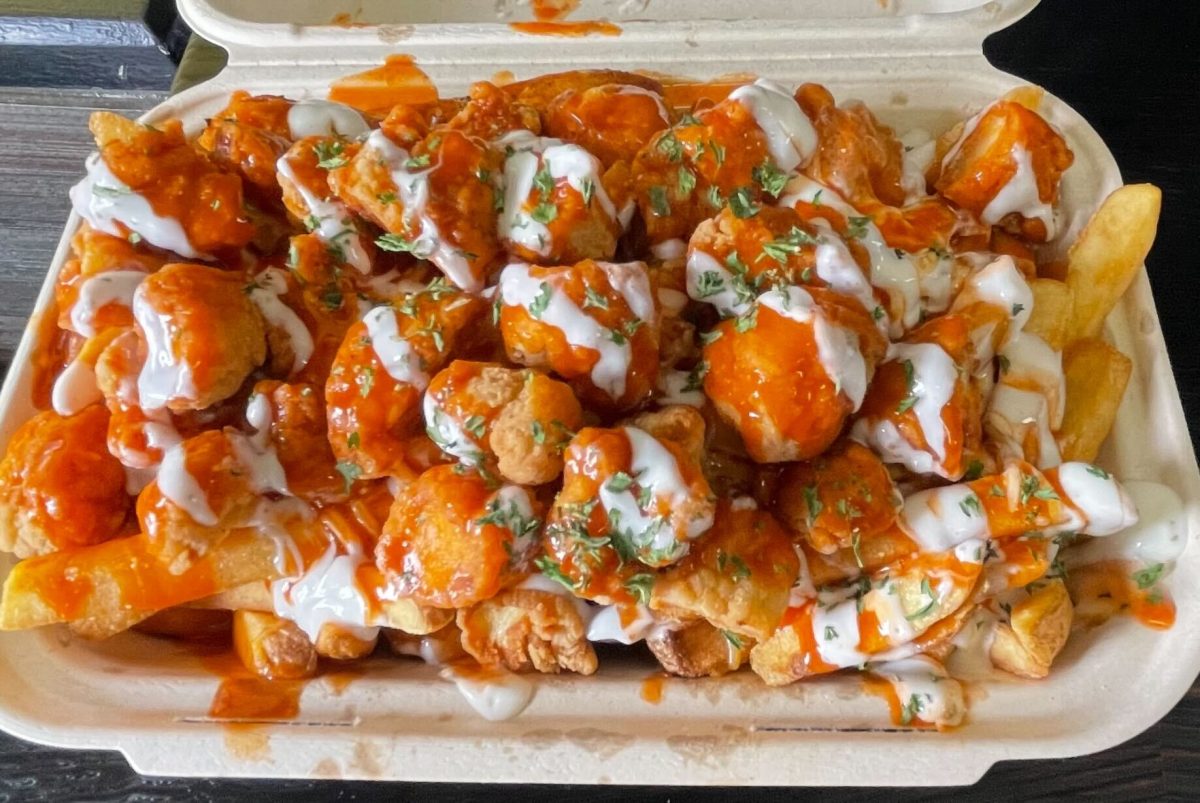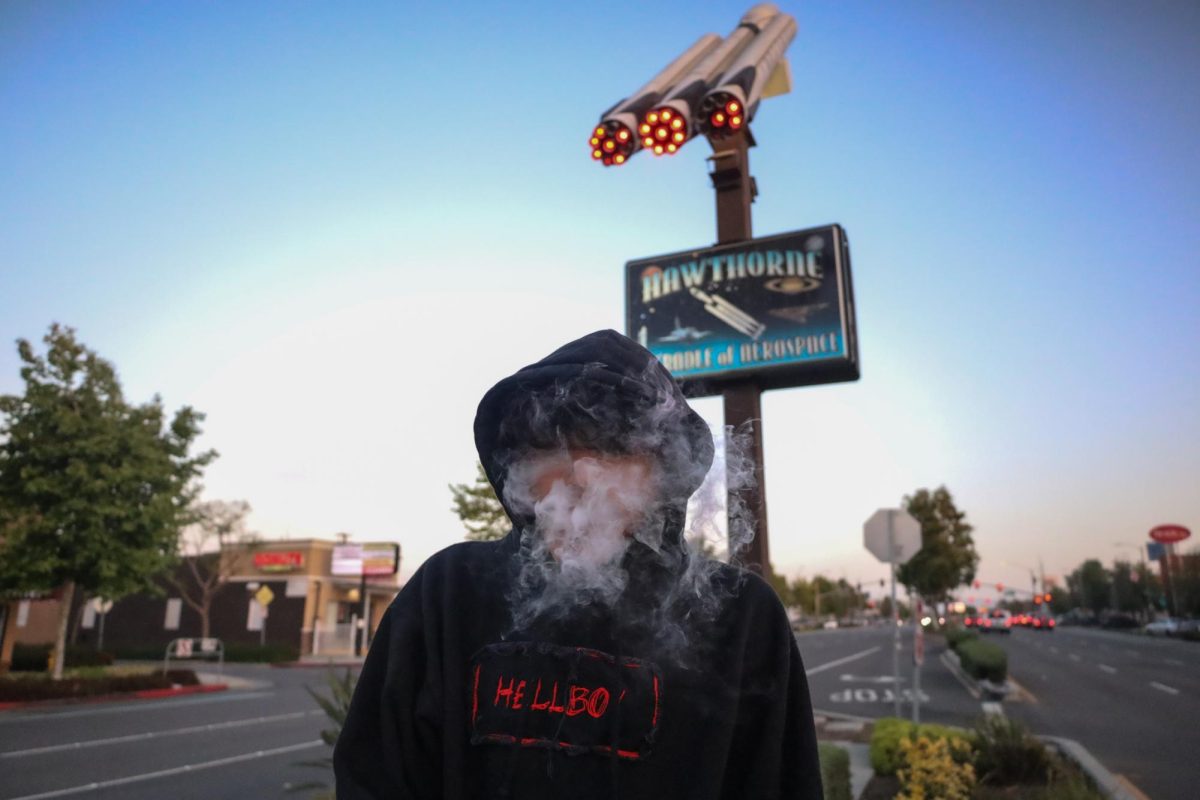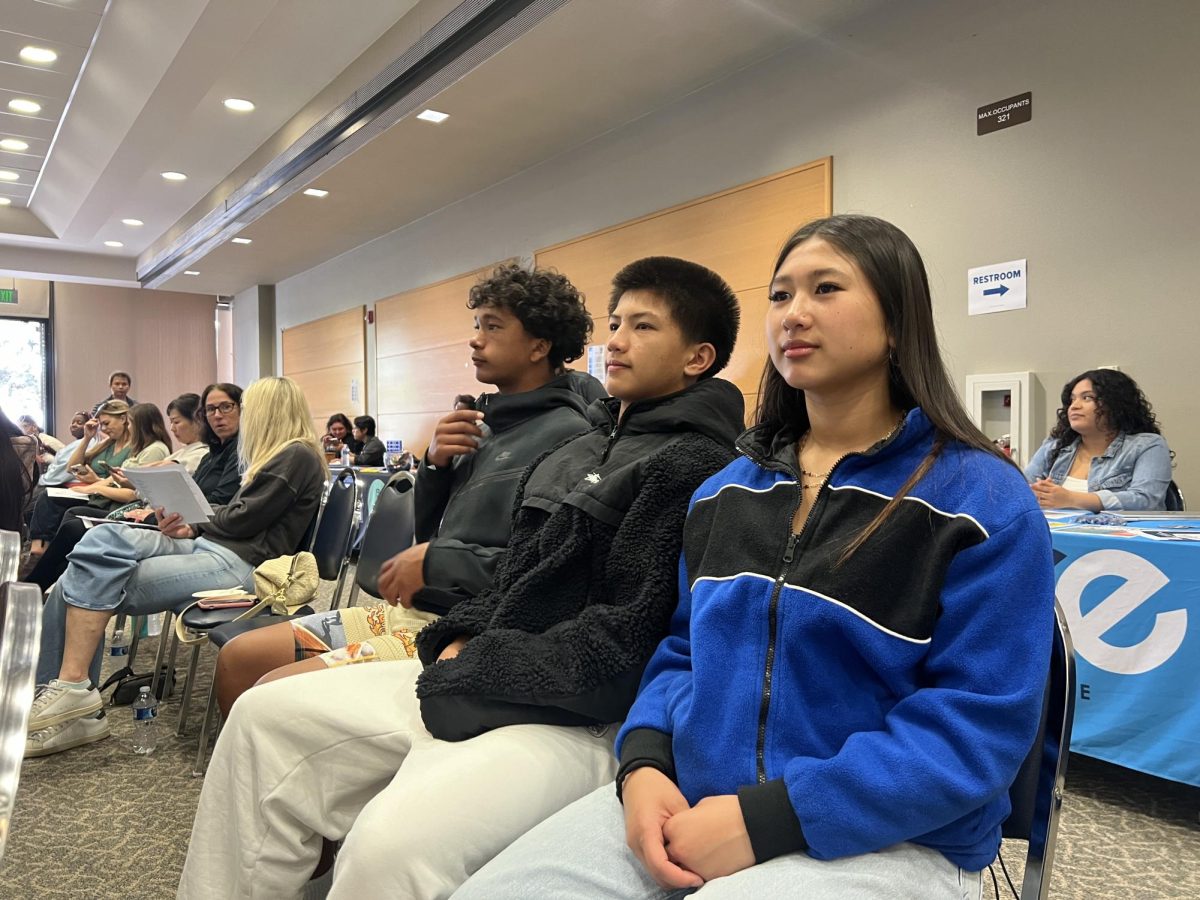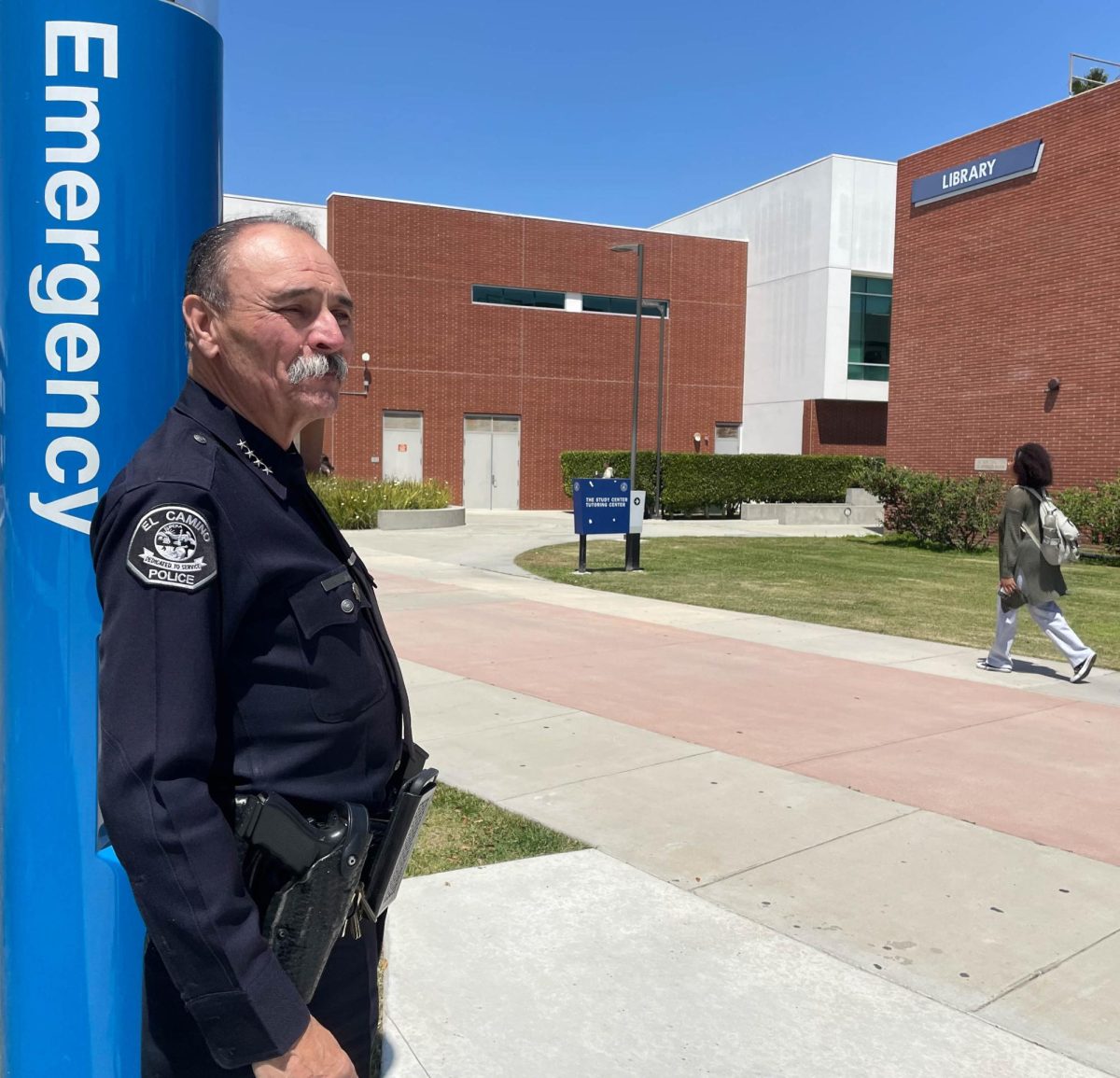Calaveras. Colors. Candles. Flowers.
This is what every Dia de los Muertos altar consists of.
El Camino’s altar at the Art Gallery is no different.
Dia de los Muertos is about honoring and remembering the dead.
The holiday takes place in many countries in Latin America with each country having its own version of the holiday.
The holiday is observed from Nov. 1 to Nov. 2 every year, although it may vary by country.
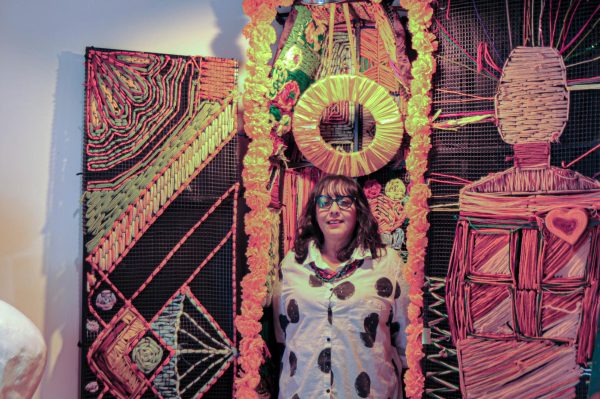
Associated Students Organization Senator of Fine Arts Dulce Stein said she normally asks artists to prepare the altar, but this year, she felt comfortable setting up the altar along with a few students from the Puente Club.
Stein said the left side of the El Camino altar is dedicated to the children who have lost their lives. She was invested in creating the altar for the kids as many have been dying around the world.
It consists of tamarind candies, hot chocolate, fruits, and sopa aguada, a type of Mexican pasta soup.

The left side of the altar is filled with yellow, lavender, and blue boxes.
The main altar in the center contains coffee, cinnamon, brown sugar, corn maize, beans, rice, pan dulce and bolillo, Stein said.
The altar hosts two large Calaveras (skulls) made of papier-mâché and is adorned with beautiful cempazuchitl flowers.
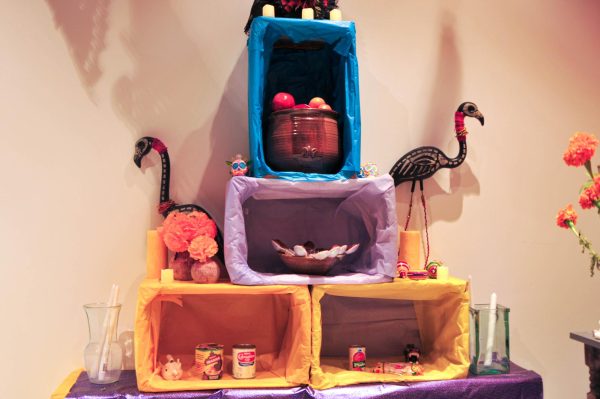
Stein said a baseball at the altar was donated by an anthropology professor.
The fondest memory the anthropology professor had was playing ball with his father, Stein said.
The altar’s right side features a large tomb decorated with different colors of yarn and a portrait of the Virgin of Guadalupe.
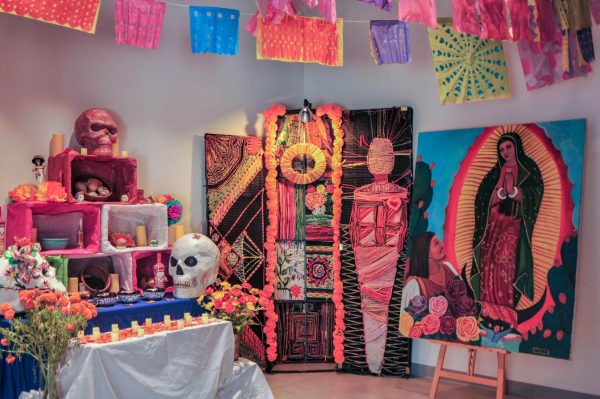
Naye Ortiz, a member of the Puente Club, said keeping the memory of their grandfather alive is what Dia de los Muertos means to them.
Ortiz said the way they celebrate Dia de los Muertos is with “yellow conchitas,” conchas being a type of Mexican sweet bread. Concha translates to shells, referring to the traditional breads signature appearance.
Oscar Angeles, an aerospace major, said that his father’s family is from Oaxaca, Mexico, and that they do an altar.
“[Dia de los Muertos] means celebrating and bringing my culture over here,” Angeles said.





